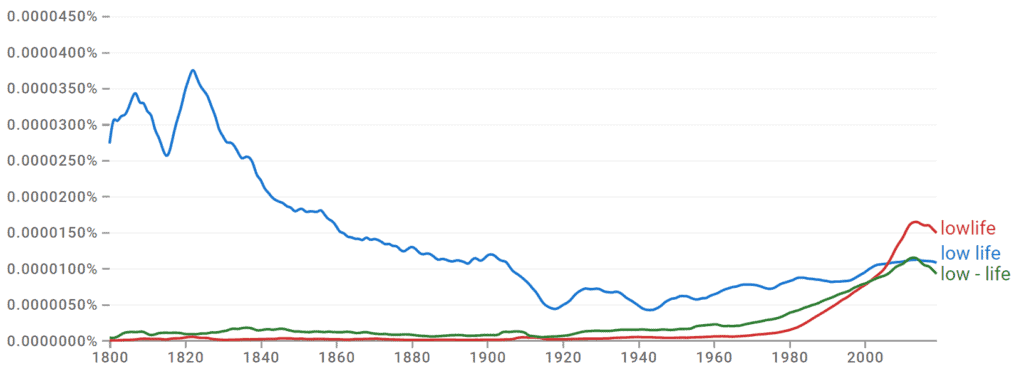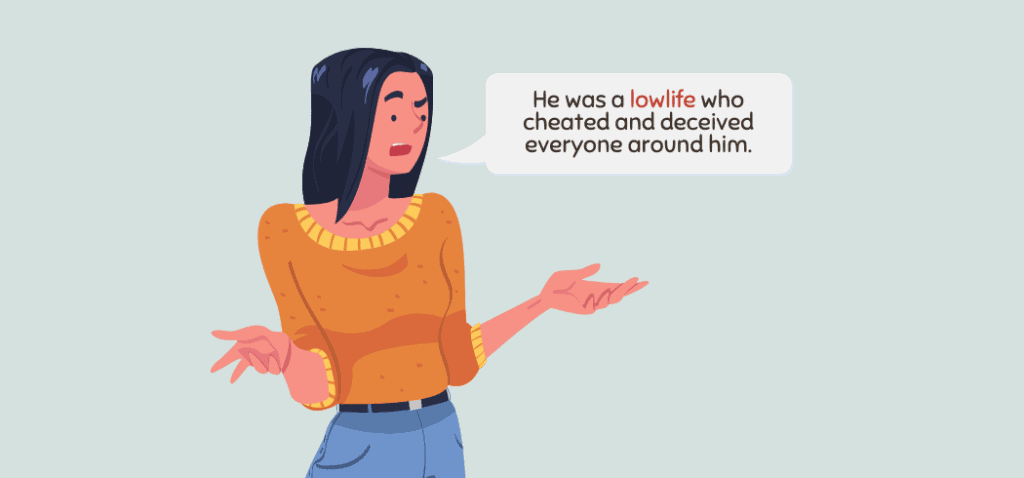We’ve all heard the term low life thrown around at least once. If you think it has anything to do with being a basement dweller or possessing a profound love for earthworms, I hate to disappoint you, but we are not talking about a literal life at a lower altitude.
Instead, let’s dive into the nitty-gritty of the phrase low life, which is often paired with a scowl and a disdainful flick of the hand. I’ll even share some sentence examples.
Low Life Meaning

The noun low life (or lowlife, if you’re into that whole brevity thing) is often used to describe a morally reprehensible individual or someone who lives by lower standards of honesty or integrity.
The term is supposed to be used disparagingly to label someone as a scoundrel or a good-for-nothing rascal. You know, the type of person who’d steal candy from a baby or unapologetically refuse to return your borrowed lawn mower. *side eyes my neighbor*
Is It Lowlifes or Lowlives?
To clear up any lingering confusion you might have, the plural form of low life is lowlives. So, if you’re speaking about a group of unscrupulous individuals, you could say, “Those lowlives are up to no good again.”
Is It Low-life or Lowlife or Low Life?
You might have noticed that the term low life can be spelled in various ways, depending on where it originated. The correct spelling is actually a matter of style and convention, but there are some loose rules to consider.

Low life, low-life, and lowlife are all accepted spellings, but lowlife seems to have the most currency in modern usage, with low life and low-life being almost neck and neck for popularity.
Usually, low life and lowlife are the noun forms, and low-life with a hyphen is commonly used as an adjective.
- Noun: The new neighbor is a real low life.
- Noun: That guy turned out to be a lowlife and scammed me out of $100.
- Adjective: I disapprove of my daughter’s low-life boyfriend.
Origin and Etymology of Low Life
The term low life is said to have originated in the late 18th century, deriving from the notion of living a low or base life in the moral sense. It’s since become quite a handy term in English, conveniently wrapping up all shades of roguish behavior into a neat two-word package.
Other Ways to Say Low Life
Want to diversify your arsenal of derogatory terms? Try any from this list of synonyms for lowlife.
- Scoundrel
- Garbage person
- Rascal
- Bottom of the barrel
- Degenerate
- Good-for-nothing
- Riffraff
- Reprobate
Low Life Examples in a Sentence

Here are a handful of complete sentences that show different ways you can use the term low life.
- He was a lowlife who cheated and deceived everyone around him.
- The detective had no respect for the lowlives he often dealt with while working the streets.
- She didn’t want to be associated with the low life that had corrupted her little brother, so she changed her name.
- Jordon was tired of the low-life antics of his deceitful co-workers and decided that working on commission was too competitive for him.
- The older neighborhood was rundown and, unfortunately, became a haven for a bunch of lowlives.
Scourges of the Earth
So, the next time you cross paths with someone with a blatant disregard for common decency, you’ll have the perfect descriptor on hand. Just remember, while low life is a handy term to express disapproval of someone, you can also write it as lowlife or low-life.
